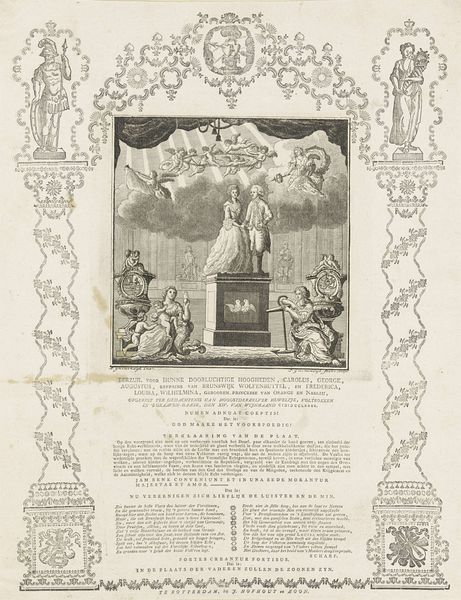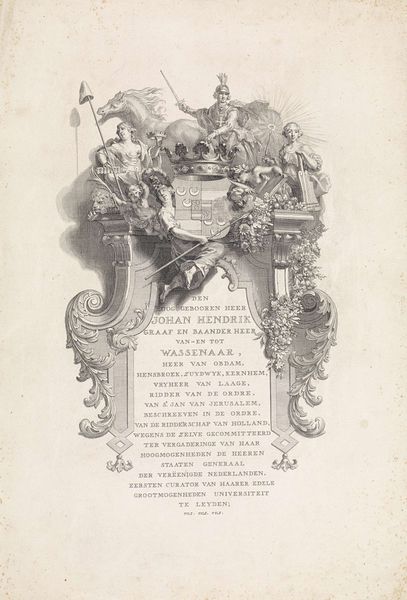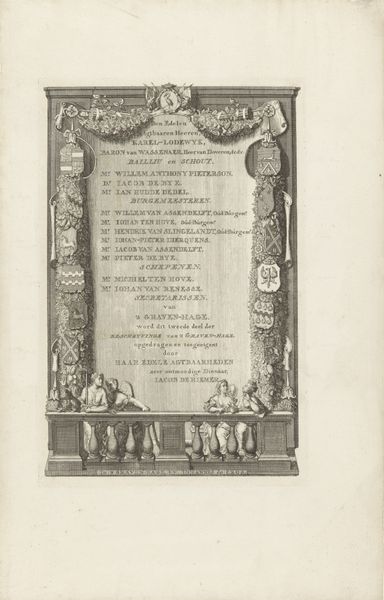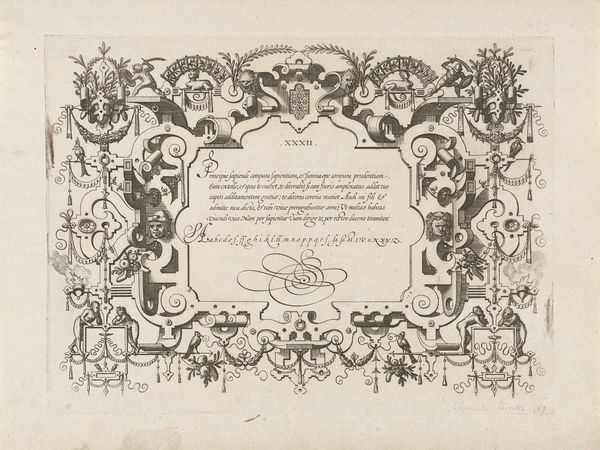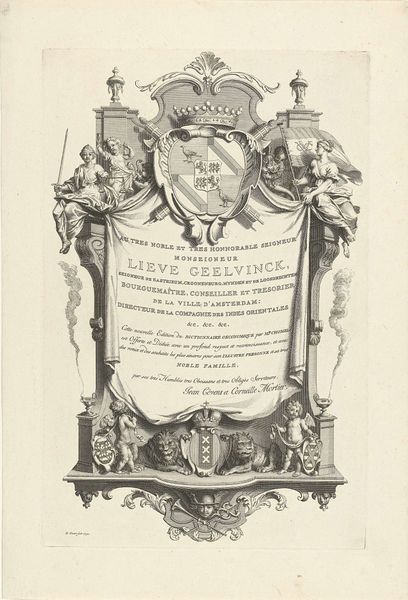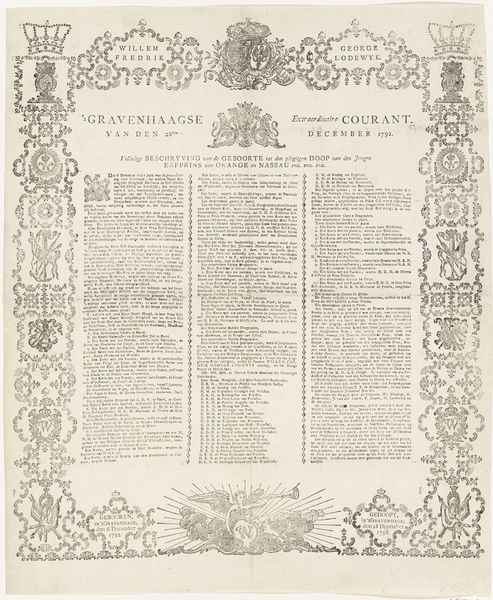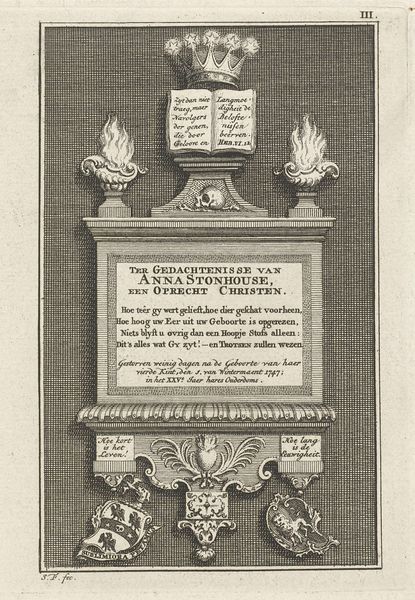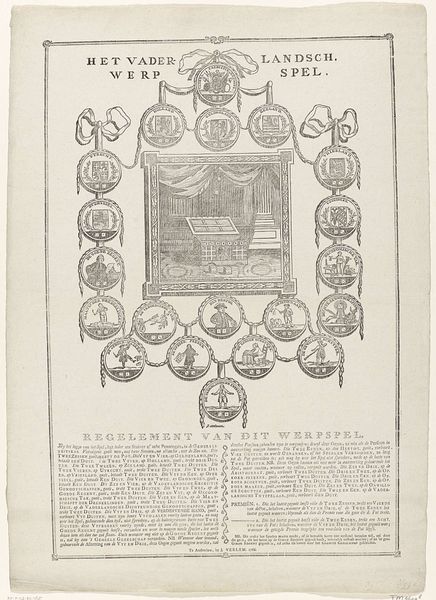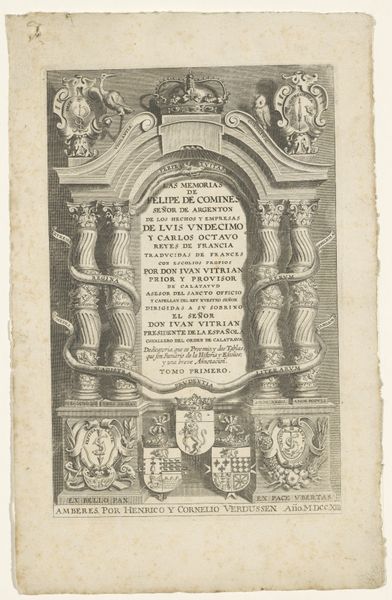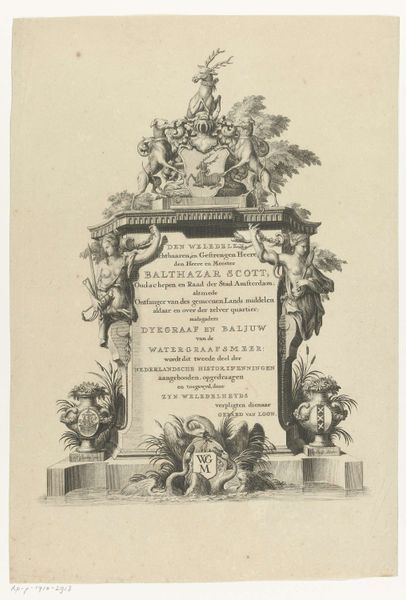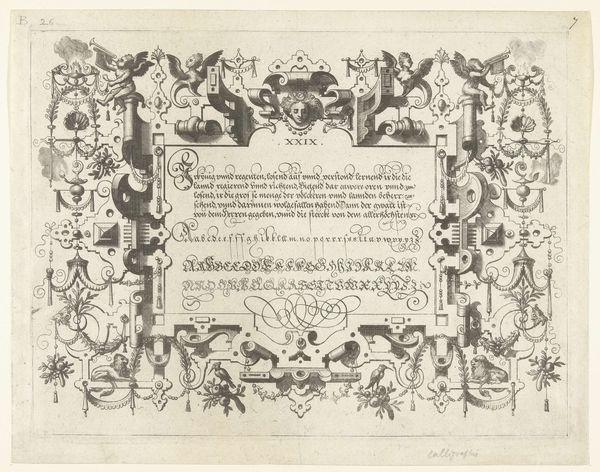
Vers op het huwelijk van Karel Christiaan van Nassau-Weilburg met prinses Carolina, 1760 1760
0:00
0:00
graphic-art, print, typography, engraving
#
portrait
#
graphic-art
#
baroque
# print
#
typography
#
history-painting
#
decorative-art
#
engraving
Dimensions: height 550 mm, width 435 mm
Copyright: Rijks Museum: Open Domain
Editor: Here we have "Verse on the marriage of Karel Christiaan van Nassau-Weilburg to Princess Carolina, 1760," created in, well, 1760. It's an engraving, almost entirely typographic, and has some decorative imagery surrounding the text. I find the density of the lettering and ornament kind of overwhelming; where do I even begin to look? Curator: I see a meticulously crafted piece of ephemera, ripe for materialist interpretation. Consider the process of its creation: engraving, a skilled and time-consuming labor. How does this mode of production, involving specialized tools and artisanal expertise, shape the meaning and value we assign to this print? Editor: I guess it shows it was important at the time; someone invested a lot of effort. But does it elevate it beyond mere propaganda? Curator: "Propaganda" perhaps simplifies it. It's a celebration of power and lineage, disseminated through the relatively accessible medium of print. Who were the “erven Anthoni de Groot” who published it? Were they printers commissioned by the Nassau-Weilburg family, or entrepreneurs capitalizing on a royal event? Thinking about their labor and social standing tells us so much about consumption, access, and meaning at the time. Editor: So, looking at who *made* the image, instead of just who's *in* the image? I see... The means of production really affected who *saw* it and what it meant. It connects this commemorative print to a broader economic network. Curator: Precisely! This work is not just a representation of a marriage. It's also a product of a complex network of materials, labor, and social relations. It's evidence of a specific historical moment viewed through the lens of its making. Editor: It's really helpful to think of the craft involved – all the physical effort behind it. I am looking at it with fresh eyes now, not simply for the text, but really, its creation and what that says about its place in history. Curator: And seeing that material evidence makes it all come alive!
Comments
No comments
Be the first to comment and join the conversation on the ultimate creative platform.
